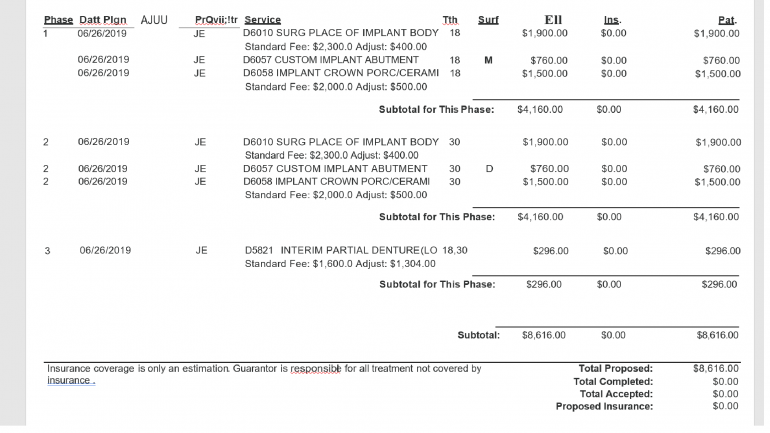
Dental Code D2951: Pin Retention - Per Tooth, in Addition to Restoration
Dental Code D2951 refers to a specific procedure in restorative dentistry that involves the use of pins to help secure a dental restoration, such as a filling or a crown, to a tooth. This technique is often employed when the tooth structure has been significantly compromised, and additional reinforcement is necessary to ensure the longevity and stability of the restoration.
What Does Dental Code D2951 Mean?
Dental Code D2951 is used to describe the process of placing dental pins, also known as retention pins, in a tooth as part of a larger restorative procedure. These pins are small, metallic devices that are inserted into the tooth structure to provide additional support and retention for the restoration, helping to prevent it from becoming dislodged or failing over time.
The "per tooth" aspect of the code indicates that the fee associated with this procedure is charged for each individual tooth that requires pin retention, rather than a flat rate for the entire procedure. The "in addition to restoration" component means that the cost of the pin placement is separate from and in addition to the cost of the restoration itself, such as a filling or a crown.
Preparation of the Tooth
Before the pins can be inserted, the dentist must first prepare the tooth by creating a suitable space or channel within the tooth structure to accommodate the pins. This may involve drilling or carving out a small, precise area within the tooth where the pins will be placed. The dentist must carefully assess the tooth's condition, shape, and remaining structure to determine the optimal placement of the pins. This preparatory step helps to ensure that the pins will be securely anchored within the tooth and provide the necessary support for the restoration. Additionally, the dentist must take great care to minimize any further damage or weakening of the tooth structure during this process.
Selecting the Appropriate Pins
Dental pins come in a variety of sizes, lengths, and materials, depending on the specific needs of the patient and the tooth being treated. The dentist will carefully select the appropriate pins based on factors such as the size and shape of the tooth, the amount of remaining tooth structure, and the type of restoration that will be placed. The chosen pins must be compatible with the patient's oral environment and provide the necessary strength and durability to support the restoration. The dentist may also consider the patient's overall dental health and any potential allergic reactions or sensitivities to the pin material when making their selection.
Inserting the Pins
Once the tooth has been prepared and the pins have been selected, the dentist will carefully insert the pins into the designated areas within the tooth. This process requires a high degree of precision and skill to ensure that the pins are properly aligned and securely placed within the tooth structure. The dentist must carefully measure the depth and angle of the pin placement to avoid penetrating the pulp chamber or causing any damage to the surrounding tooth and gum tissues. Proper insertion of the pins is crucial for the long-term success of the restoration.
Securing the Restoration
After the pins have been inserted, the dentist will proceed with the placement of the dental restoration, such as a filling or a crown. The pins help to provide additional support and retention for the restoration, ensuring that it is firmly and securely anchored to the tooth. This helps to prevent the restoration from becoming dislodged or failing over time, which could lead to further tooth damage or the need for more extensive dental work. The restoration must be carefully shaped and contoured to ensure a proper fit and a comfortable, natural-looking appearance for the patient.
Finishing Touches
Finally, the dentist will polish and finish the restoration, ensuring that it is smooth, comfortable, and aesthetically pleasing for the patient. This step involves carefully shaping and contouring the restoration to match the surrounding teeth and ensure a natural-looking appearance. The dentist may also need to make any necessary adjustments to the bite or occlusion to ensure the patient's comfort and proper function of the restoration.
The Importance of Pin Retention
The use of dental pins as described in Dental Code D2951 is an important technique in restorative dentistry, as it helps to ensure the long-term success and stability of dental restorations. When a tooth has been significantly compromised by decay, trauma, or other factors, the remaining tooth structure may not be sufficient to adequately support a restoration on its own.
By using pins to provide additional reinforcement and retention, the dentist can help to prevent the restoration from becoming dislodged or failing over time. This, in turn, can help to preserve the tooth and prevent the need for more extensive and costly dental treatments, such as root canals or tooth extractions.
Summary of Dental Code D2951
Dental Code D2951 refers to the placement of dental pins as part of a larger restorative procedure, such as the placement of a filling or a crown. This technique is used when the tooth structure has been significantly compromised, and additional reinforcement is necessary to ensure the long-term stability and success of the restoration.
The pin retention procedure involves the preparation of the tooth, the selection of appropriate pins, the careful insertion of the pins, the placement of the restoration, and the final finishing touches. This process is an important component of restorative dentistry, as it helps to prevent the need for more extensive and costly dental treatments down the line.
Explore the latest dental procedures and find the best deals on Dr. BestPrice, your trusted online dental auction platform.
